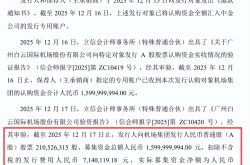Huawei vs Apple: a battle of titans, Samsung Electronics struggling to survive?
![]() 09/13 2024
09/13 2024
![]() 490
490

Produced by | Huabo Business Review
On September 10th, Huawei and Apple held product launches simultaneously, with Huawei unveiling the world's first triple-folding screen phone, the Mate XT, while Apple introduced the new iPhone 16 series.
Meanwhile, in a "forgotten" corner, Samsung was again hit by news of layoffs.
On September 11th, Reuters reported that Samsung Electronics, the world's largest manufacturer of smartphones, TVs, and memory chips, is cutting its overseas workforce, with some departments seeing layoffs of up to 30%.
This is the second time in September that Samsung Electronics has been reported to be laying off employees. On September 4th, South Korean media outlet The Seoul Economic Daily reported that Samsung Electronics had laid off over 130 employees in China, accounting for 8% of its sales force in the country.
Sanlian Lifeweek believes that Samsung's continued large-scale layoffs indicate its lack of intention to revive the Chinese mobile phone market, opting instead to maintain a minimal presence in China.
01
The Unreturnable Chinese Market
As the world's leading mobile phone brand by sales volume, news of Samsung Electronics' layoffs is not unnoticed, but in the hearts of Chinese consumers, Samsung has long since fallen off the radar.
According to research firm IDC, Samsung's market share in China fell below 1% by the first half of this year.
In 2012, however, Samsung sold a staggering 30.06 million units in China, firmly establishing itself as the leader in the Chinese mobile phone market. However, following a series of questionable moves, Samsung's chances of returning to the Chinese market were all but extinguished.
2016 marked a turning point for Samsung in the Chinese market. That year, the NOTE 7 exploded, prompting multiple airlines worldwide to ban Samsung phones on flights, damaging the company's premium image. Furthermore, Samsung's delay in recalling phones in the Chinese market sparked outrage among consumers, leading to a sharp decline in market share.
Concurrently, domestic phone makers like Huawei and Xiaomi rose rapidly, quickly capturing market share. Samsung gradually faded from the Chinese market.
Samsung attempted to "regain what it had lost," but to no avail.
In 2019, Samsung announced its "return to the Chinese market," emphasizing innovation and products, but failed to regain consumer favor, with sales remaining sluggish. That October, Samsung closed its factory in Huizhou, effectively withdrawing from mobile phone production in China. In 2013, the company employed 63,316 people in China, but by early 2022, this number had dropped to less than 20,000.
While Samsung struggles to compete with local brands in the Chinese market, it maintains its position as the global leader in mobile phones outside of China. Data shows that in 2023, Samsung held the largest market share in 42 markets worldwide. In the first two quarters of 2024, Samsung's mobile phone sales also ranked first globally.
02
Samsung Still Making Money in China
Despite holding less than 1% of the Chinese mobile phone market, Samsung continues to profit from China thanks to its leading position in the global memory chip industry.
Samsung's financial report shows that in the first half of this year, the company generated revenue of 32.3 trillion Korean won (approximately RMB 170 billion) from the Chinese market, a near doubling from the 17.8 trillion Korean won (approximately RMB 94 billion) generated in the first half of 2023.
Samsung's ability to buck the trend in the Chinese market is largely due to its position as the world's largest memory chip supplier, holding around 40% of the global market share. Given China's massive demand for memory chips in industries such as mobile phones, personal computers, and servers, Samsung, with its geographical advantage and the largest overseas memory chip factory in Xi'an, China, has successfully capitalized on this market opportunity, achieving robust growth in memory chip sales.
Additionally, the significant increase in global memory chip prices in the first half of the year, especially a more than 40% surge, provided a strong boost to the performance of memory chip manufacturers like Samsung, directly driving up its sales revenue in the Chinese market.
It is worth noting that with the global acceleration of AI development, the demand for high-end memory chips such as HBM (High Bandwidth Memory) has soared. Due to the highly concentrated production technology of HBM chips, only three companies worldwide – Samsung, SK Hynix, and Micron – are capable of supplying them, further tightening market supply. In particular, faced with potential US restrictions, Chinese companies have increased their imports of HBM chips from South Korea, not only driving up HBM chip prices but also significantly boosting South Korea's exports of memory chips to China.
However, Samsung is not entirely without concerns.
With the soaring demand for high-performance computing capabilities, SK Hynix, another South Korean company, has responded swiftly to market demands, with its profit rate soaring from 15.3% in 2022 to 32.7% in the first half of 2023, demonstrating robust growth momentum. SK Hynix's revenue in the Chinese market also surged from RMB 20 billion in the first half of last year to over RMB 45 billion in the first half of this year.
In contrast, despite maintaining a significant presence in various technology fields, Samsung's profit rate has declined in this wave of AI-driven high-performance computing, falling from 24.2% in 2022 to 16.2% in the first half of 2024.





